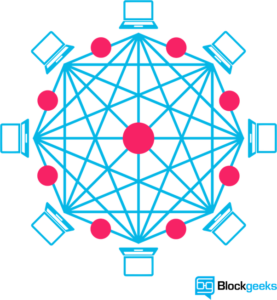
Reinventing Power & Democratizing Energy
Last Friday, Stanford University had the pleasure to host JB Straubel, CTO and Co-founder of Tesla to share his insights of new developments in SolarCity and Tesla. Previous to my arrival at Stanford, I have been working in a small technology company that develops electrical digital transformers, I and would like to share some ideas for a brighter shared renewable energy future…
Reinventing Power
The electrical grid is the engineering triumph of the 20th century. However, the energy infrastructure has grown old, obsolete and does not support a brighter energy future by the rise of renewable energy sources. A new set of digital transformer technologies ubiquitous connected to the cloud, can collectively transform and reinvent power as we know it. Energy can be digitized and in the process creating abundance of energy by democratizing renewable energy sources to accelerate global impact, benefitting billions of people.
Electricity revolutionized communication, and by digitizing communication, the internet emerged. The internet paved the fundamentals of our current economy, and the internet market is more immense than anyone could imagine. By merging digital data and electricity into a new commodity, locally produced renewable energy can be transformed and released back into a new adaptive digital grid, and sold where it´s most needed, as a new transaction in the blockchain protocols, as the blockchain network validates and guarantees the transactions in a digital distributed system of registers [1].

This translates to the possibility of being able to track electricity transactions back to its origin production site, enabling customers to buy and sell true locally produced renewable energy. The state of the art technology in digital and super compact solid-state transformers can provide small-scale generation and storage options to provide resilient and reliable sources of power in combination with new developments by SolarCity and Tesla.

Democratizing Energy
A complete and sustainable infrastructure enables adopters to produce, provide and connect other residential homes or industries with renewable energy, in particularly as renewable power sources become more widely used. New developments at SolarCity can produce high-efficient solar panels that converts sunlight into electricity at 22 percent efficiency, compared to conventional silicon-based solar panel of between 16 and 18 percent efficiency produced in China.

Today SolarCity´s [4] $750 million solar facility can produce over one gigawatt of solar panels per year, Tesla [5] is about to become a utility company, and producing cars is just a side track of its business. Today federal solar subsides require utility companies to buy back unused power, making residential systems financial attractive. However, new infrastructure advancements could take this to the next level.
New Business Models
Exponential technologies and advancements in digital electronics, are paving its way into the next generation of energy infrastructure, by reinventing power and democratizing energy. New business models can provide electricity and high-speed internet as a free commodity to the more than 1.2 billion people globally with restricted access to electricity and digital communication.
References
[1] https://blockgeeks.com/guides/what-is-blockchain-technology/
[2] https://www.dreamstime.com/stock-photo-smart-city-smart-grid-concept-industrial-devices-connected-network-renewable-energy-technology-image70550060
[3] https://www.dreamstime.com/stock-photo-smart-city-smart-grid-concept-industrial-devices-connected-network-renewable-energy-technology-image70550060
[4] https://www.technologyreview.com/s/600770/10-breakthrough-technologies-2016-solarcitys-gigafactory/
[5] https://electrek.co/2016/04/08/tesla-begins-alerting-1st-general-us-powerwall-customers-installations-starting-in-june/
Users who have LIKED this post:
2 comments on “Reinventing Power & Democratizing Energy”
Comments are closed.


Christopher, this is a great post expanding on the current trend of local, clean energy production. I agree that the power distribution grid was revolutionary when it was first introduced, but lately it is obsolete and overcoming this infrastructure is a problem for the “smart grid.” It is very interesting how you see Blockchain fitting into energy distribution. If energy is being produced at various sources i.e homes with solar panels, then it is necessary to track the energy production, and distribution across consumers. It is exciting to think of the possibilities if we do allow for smart energy production and distribution, since it will allow for processing tons of new data on energy to make this process as efficient as possible!
Users who have LIKED this comment:
Thank you Christopher for the insightful post on the democratisation of energy!
I’m personally very excited about the opportunities that the combination of renewable energy, smart grid and blockchain will bring in the future. There are already some examples of peer-to-peer businesses arising with examples such as Vandebron where you can purchase electricity directly from your neighbours. https://www.fastcompany.com/3036271/the-sharing-economy-takes-on-electricity-so-you-can-buy-your-power-from-neighbors. I believe that this development that you described in the post will help build stronger and more sustainable communities where more people are focused on sharing their renewable energy resources.